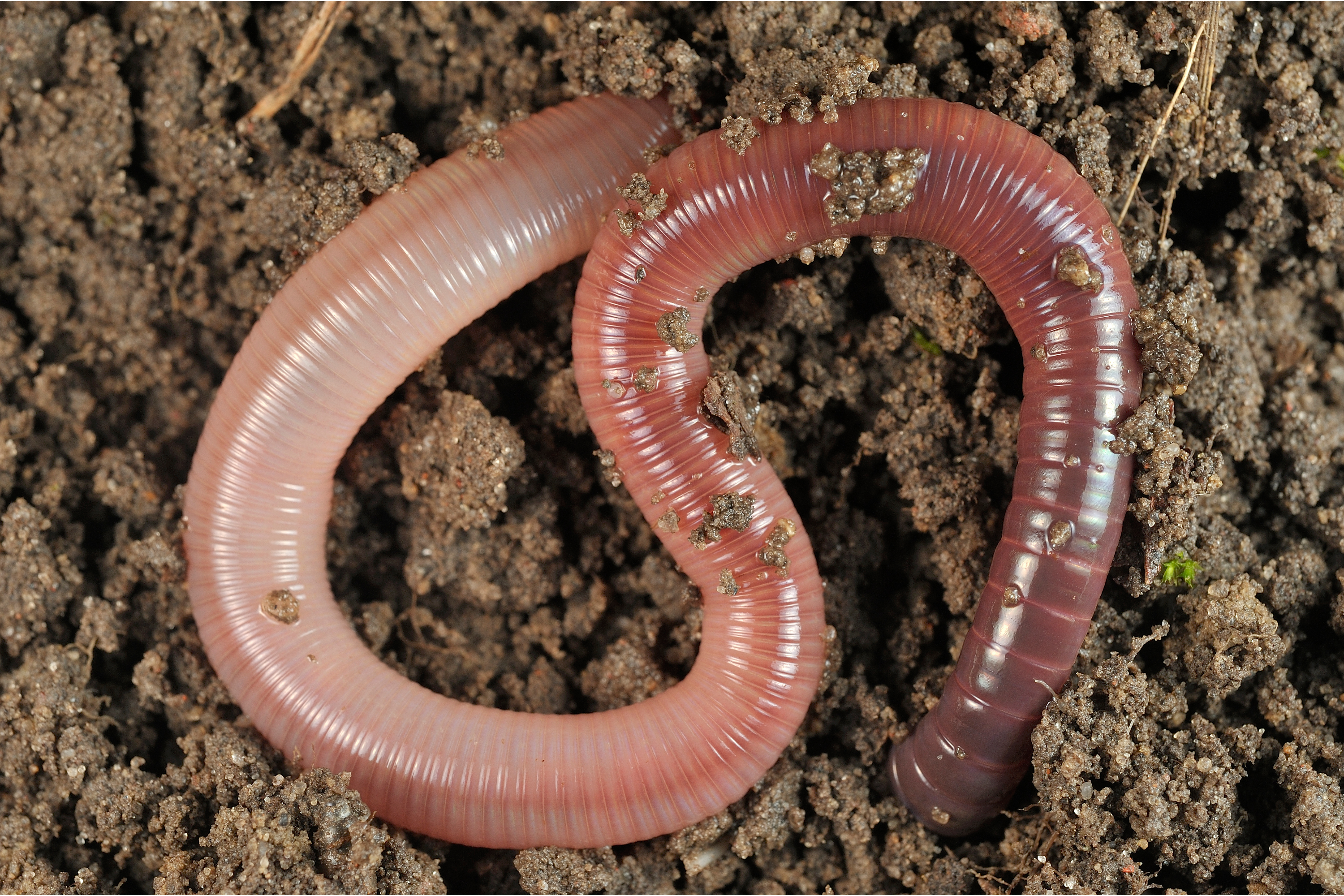Common earthworm
(Lumbricus terrestris)

Description
Lumbricus terrestris is a large, reddish worm species thought to be native to Western Europe, now widely distributed around the world (along with several other lumbricids). In some areas where it is an introduced species, some people consider it to be a significant pest for out-competing native worms. Through much of Europe, it is the largest naturally occurring species of earthworm, typically reaching 20 to 25 cm in length when extended. L. terrestris is relatively large, pinkish to reddish-brown in colour, generally 110–200 millimetres (4.3–7.9 in) in length and about 7–10 millimetres (0.28–0.39 in) in diameter. It has around 120-170 segments, often 135-150. The body is cylindrical in the cross section, except for the broad, flattened posterior section. Head end dark brown to reddish brown lateral, dorsal pigmentation fading towards the back. The dew worm has a hydrostatic skeleton and moves by longitudinal and circular muscular contractions. Setae – tiny hair-like projections – provides control against the surrounding soil. Surface movements on moist, flat terrain were reported at a speed of 20 m/h and, based on measurements of the length of the trail, nocturnal activity away from the burrow was estimated at up to 19 m during a single surface foray. Such movement is apparent during and after heavy rainfall and usually happens when people become aware of relatively large numbers of earthworms in, for example, urban ecosystems. This form of activity is mostly thought to apply primarily to the prevention of floods and waterlogged burrows. However, this can not be the case, like L. terrestris, like other earthworms, can live in oxygenated water for long periods of time, stretching to weeks. Even, under less severe environmental conditions, when sufficient over-surface movements of air temperature and humidity are normal.
Taxonomic tree:







